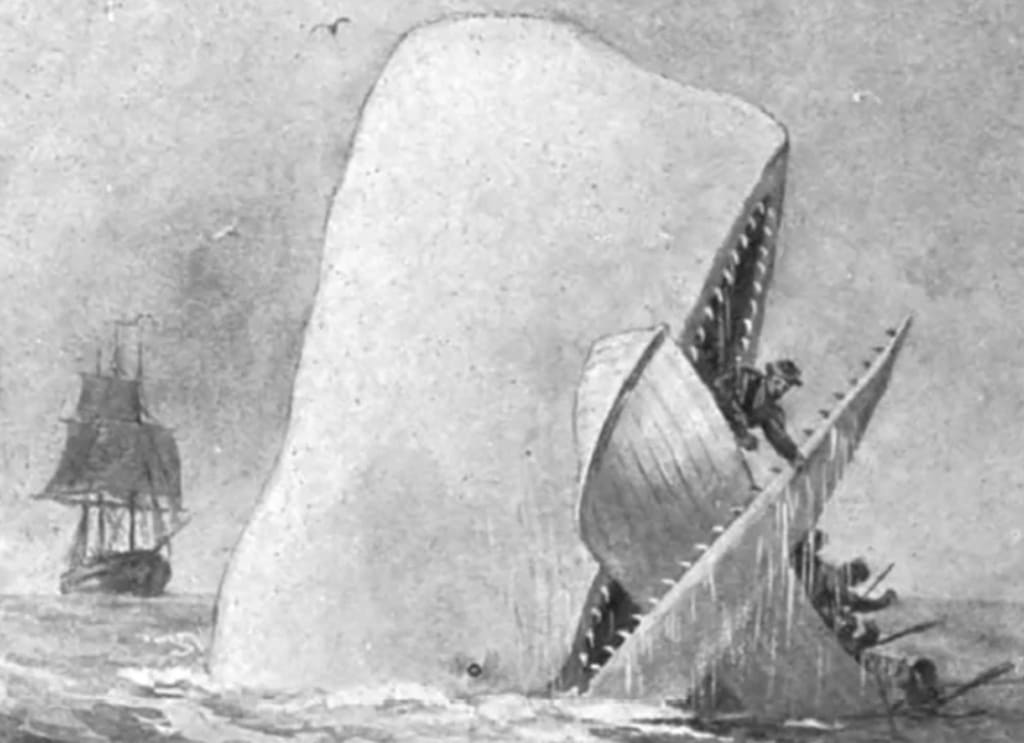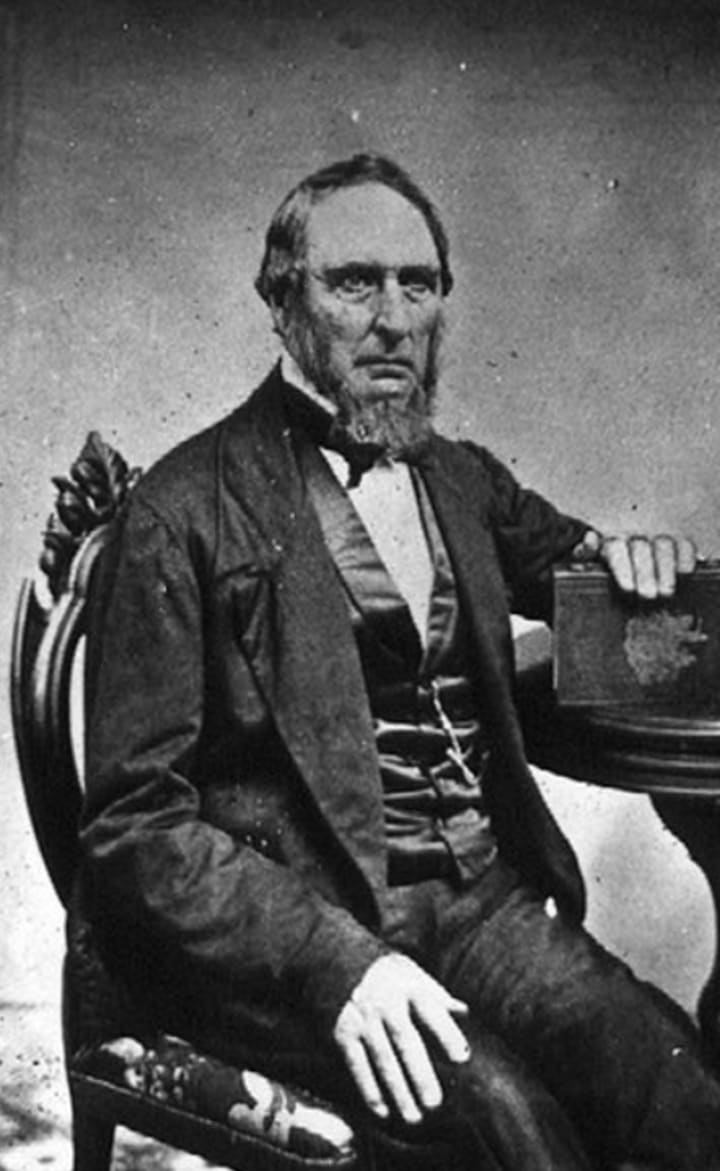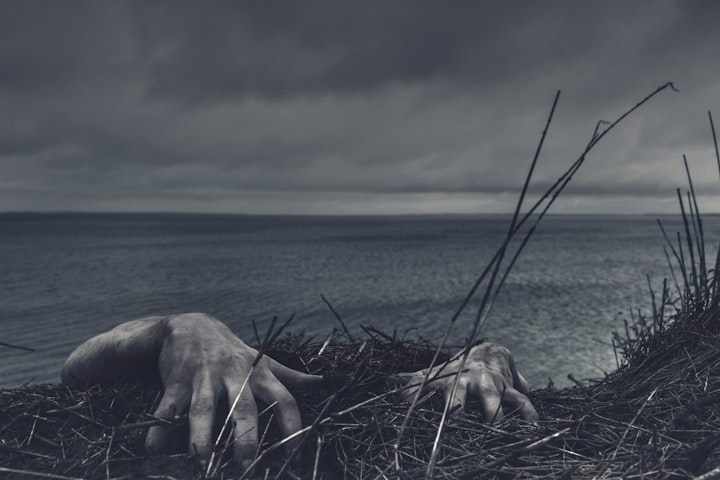The True-Life Horror That Inspired ‘Moby-Dick’
The whaler Essex was indeed sunk by a whale—and that’s only the beginning

In July of 1852, a 32-year-old novelist named Herman Melville had high hopes for his new novel, Moby-Dick; or, The Whale, despite the book’s mixed reviews and tepid sales. That month he took a steamer to Nantucket for his first visit to the Massachusetts island, home port of his novel’s mythic protagonist, Captain Ahab, and his ship, the Pequod. Like a tourist, Melville met local dignitaries, dined out and took in the sights of the village he had previously only imagined.
And on his last day on Nantucket he met the broken-down 60-year-old man who had captained the Essex, the ship that had been attacked and sunk by a sperm whale in an 1820 incident that had inspired Melville’s novel. Captain George Pollard Jr. was just 29 years old when the Essex went down, and he survived and returned to Nantucket to captain a second whaling ship, Two Brothers. But when that ship wrecked on a coral reef two years later, the captain was marked as unlucky at sea—a “Jonah”—and no owner would trust a ship to him again. Pollard lived out his remaining years on land, as the village night watchman.
Melville had written about Pollard briefly in Moby-Dick, and only with regard to the whale sinking his ship. During his visit, Melville later wrote, the two merely “exchanged some words.” But Melville knew Pollard’s ordeal at sea did not end with the sinking of the Essex, and he was not about to evoke the horrific memories that the captain surely carried with him. “To the islanders he was a nobody,” Melville wrote, “to me, the most impressive man, tho’ wholly unassuming, even humble—that I ever encountered.”
Pollard had told the full story to fellow captains over a dinner shortly after his rescue from the Essex ordeal, and to a missionary named George Bennet. To Bennet, the tale was like a confession. Certainly, it was grim: 92 days and sleepless nights at sea in a leaking boat with no food, his surviving crew going mad beneath the unforgiving sun, eventual cannibalism and the harrowing fate of two teenage boys, including Pollard’s first cousin, Owen Coffin. “But I can tell you no more—my head is on fire at the recollection,” Pollard told the missionary. “I hardly know what I say.”
The trouble for Essex began, as Melville knew, on August 14, 1819, just two days after it left Nantucket on a whaling voyage that was supposed to last two and a half years. The 87-foot-long ship was hit by a squall that destroyed its topgallant sail and nearly sank it. Still, Pollard continued, making it to Cape Horn five weeks later. But the 20-man crew found the waters off South America nearly fished out, so they decided to sail for distant whaling grounds in the South Pacific, far from any shores.
To restock, the Essex anchored at Charles Island in the Galapagos, where the crew collected sixty 100-pound tortoises. As a prank, one of the crew set a fire, which, in the dry season, quickly spread. Pollard’s men barely escaped, having to run through flames, and a day after they set sail, they could still see smoke from the burning island. Pollard was furious, and swore vengeance on whoever set the fire. Many years later Charles Island was still a blackened wasteland, and the fire was believed to have caused the extinction of both the Floreana Tortoise and the Floreana Mockingbird.

By November of 1820, after months of a prosperous voyage and a thousand miles from the nearest land, whaleboats from the Essex had harpooned whales that dragged them out toward the horizon in what the crew called “Nantucket sleigh rides.” Owen Chase, the 23-year-old first mate, had stayed aboard the Essex to make repairs while Pollard went whaling. It was Chase who spotted a very big whale—85 feet in length, he estimated—lying quietly in the distance, its head facing the ship. Then, after two or three spouts, the giant made straight for the Essex, “coming down for us at great celerity,” Chase would recall—at about three knots. The whale smashed head-on into the ship with “such an appalling and tremendous jar, as nearly threw us all on our faces.”
The whale passed underneath the ship and began thrashing in the water. “I could distinctly see him smite his jaws together, as if distracted with rage and fury,” Chase recalled. Then the whale disappeared. The crew was addressing the hole in the ship and getting the pumps working when one man cried out, “Here he is—he is making for us again.” Chase spotted the whale, his head half out of water, bearing down at great speed—this time at six knots, Chase thought. This time it hit the bow directly under the cathead and disappeared for good.
The water rushed into the ship so fast, the only thing the crew could do was lower the boats and try fill them with navigational instruments, bread, water and supplies before the Essex turned over on its side.
Pollard saw his ship in distress from a distance, then returned to see the Essex in ruin. Dumbfounded, he asked, “My God, Mr. Chase, what is the matter?”
“We have been stove by a whale,” his first mate answered.
Another boat returned, and the men sat in silence, their captain still pale and speechless. Some, Chase observed, “had no idea of the extent of their deplorable situation.”
The men were unwilling to leave the doomed Essex as it slowly foundered, and Pollard tried to come up with a plan. In all, there were three boats and 20 men. They calculated that the closest land was the Marquesas Islands and the Society Islands, and Pollard wanted to set off for them—but in one of the most ironic decisions in nautical history, Chase and the crew convinced him that those islands were peopled with cannibals and that the crew’s best chance for survival would be to sail south. The distance to land would be far greater, but they might catch the trade winds or be spotted by another whaling ship. Only Pollard seemed to understand the implications of steering clear of the islands. (According to Nathaniel Philbrick, in his book In the Heart of the Sea: The Tragedy of the Whaleship Essex, although rumors of cannibalism persisted, traders had been visiting the islands without incident.)
Thus they left the Essex aboard their 20-foot boats. They were challenged almost from the start. Saltwater saturated the bread, and the men began to dehydrate as they ate their daily rations. The sun was ravaging. Pollard’s boat was attacked by a killer whale. They spotted land—Henderson Island—two weeks later, but it was barren. After another week the men began to run out of supplies. Still, three of them decided they’d rather take their chances on land than climb back into a boat. No one could blame them. And besides, it would stretch the provisions for the men in the boats.
About the Creator
Mark Xavier
typing...






Comments
There are no comments for this story
Be the first to respond and start the conversation.